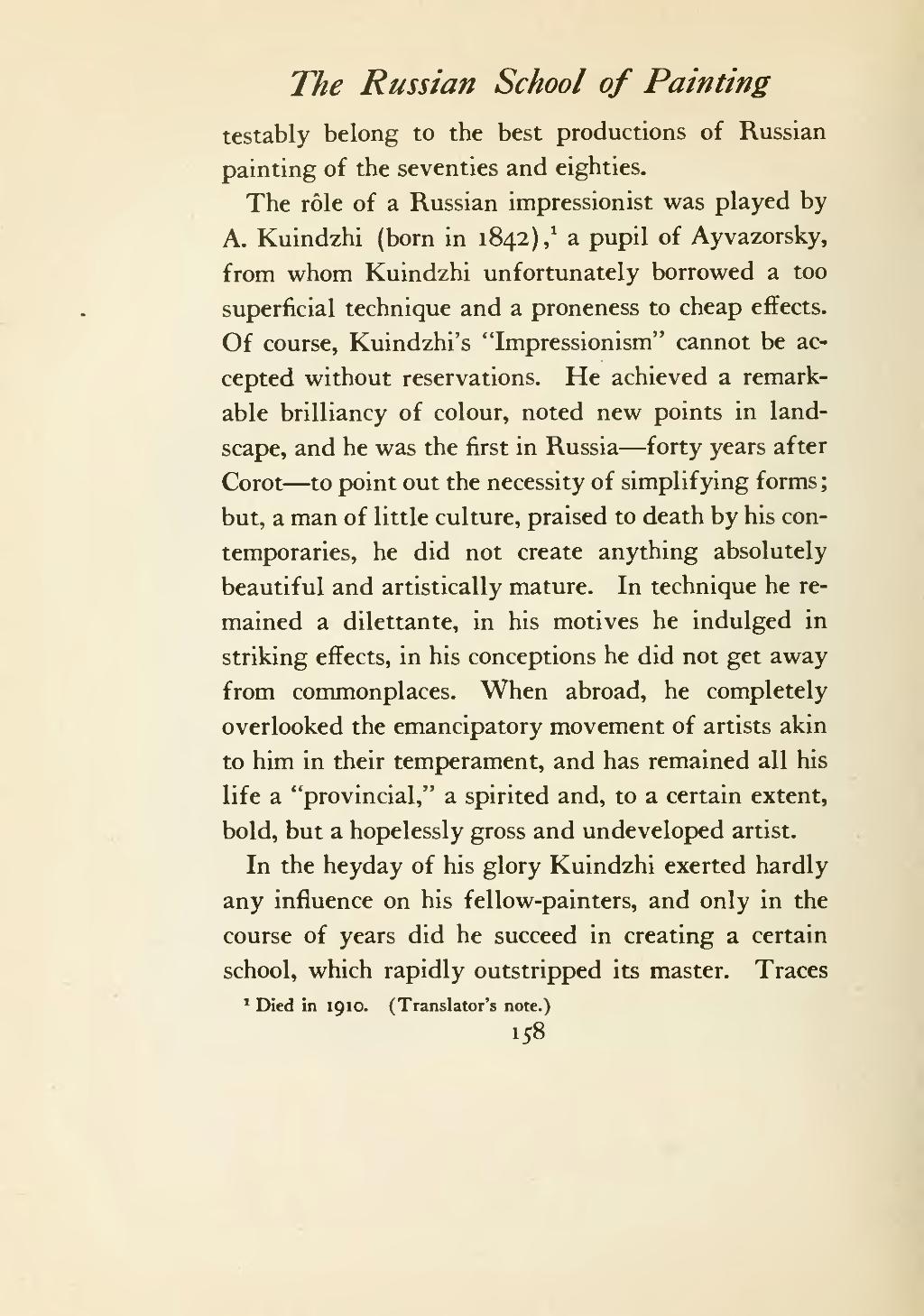The Russian School of Painting
testably belong to the best productions of Russian painting of the seventies and eighties.
The rôle of a Russian impressionist was played by A. Kuindzhi (born in 1842)[1] a pupil of Ayvazorsky, from whom Kuindzhi unfortunately borrowed a too superficial technique and a proneness to cheap effects. Of course, Kuindzhi's "Impressionism" cannot be accepted without reservations. He achieved a remarkable brilliancy of colour, noted new points in landscape, and he was the first in Russia—forty years after Corot—to point out the necessity of simplifying forms; but, a man of little culture, praised to death by his contemporaries, he did not create anything absolutely beautiful and artistically mature. In technique he remained a dilettante, in his motives he indulged in striking effects, in his conceptions he did not get away from commonplaces. When abroad, he completely overlooked the emancipatory movement of artists akin to him in their temperament, and has remained all his life a "provincial," a spirited and, to a certain extent, bold, but a hopelessly gross and undeveloped artist.
In the heyday of his glory Kuindzhi exerted hardly any influence on his fellow-painters, and only in the course of years did he succeed in creating a certain school, which rapidly outstripped its master. Traces
- ↑ Died in 1910. (Translator's note.)
158
